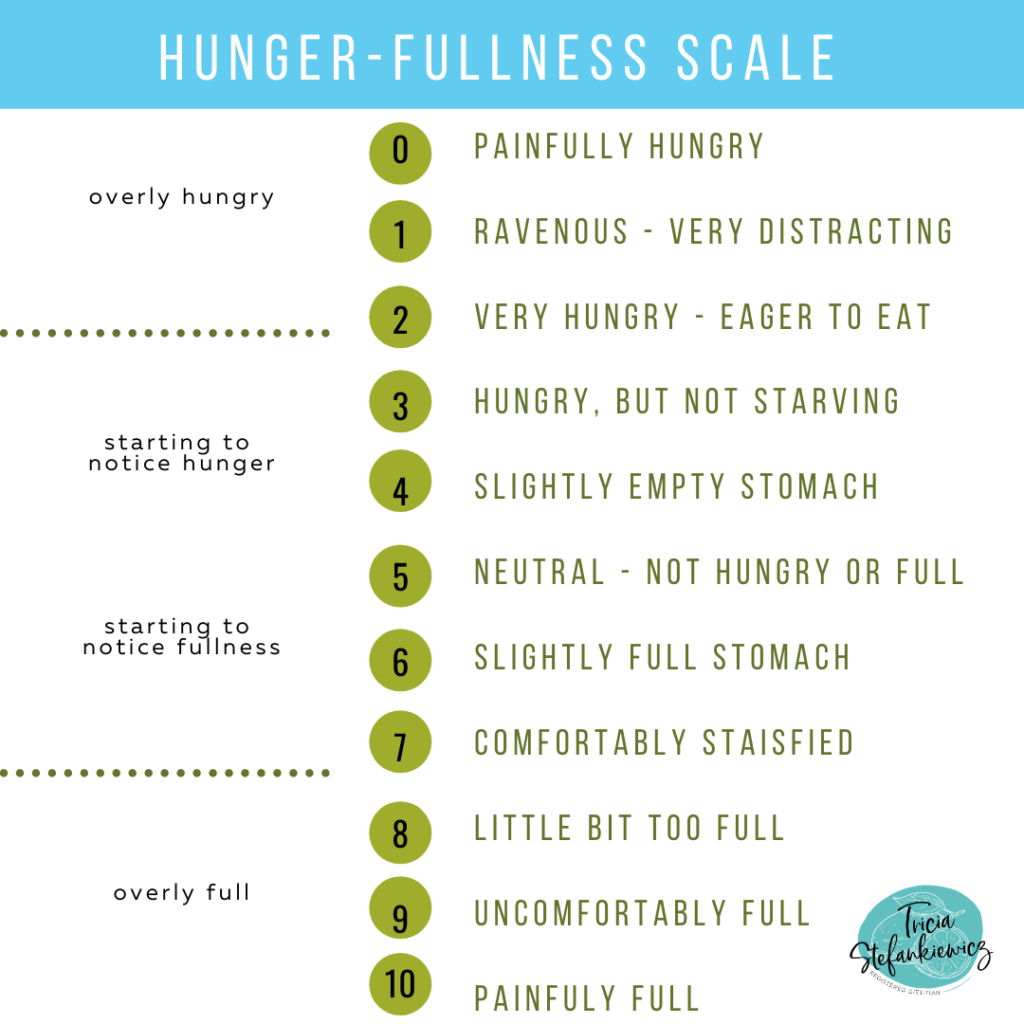This episode talks about mindful eating, mindless eating, and how to work towards getting into a mindset of being present- or mindful- during meals.
Episode Resources:
Today we will be talking about mindful eating, what it is, the opposite of mindful eating – which is distracted or mindless eating – and how to work more towards getting into a mindset of being present during meals – or being more mindful
Let’s think for a moment, how present are you during your meals? Do you find yourself being distracted while eating – such as eating while you are driving, talking on the phone, while you are sitting at your desk working, or even standing by the sink in your kitchen? Do you find yourself eating mindlessly or emotionally like when you are tired, upset, or bored? I’ve been there too. A few years back, I had a solid 3 hard months when I would bake and eat because I was sad after the unexpected death of my dad, not being able to move, and finding out my son had multiple food allergies. Instead of focusing on how food could nourish, heal, and fuel my body, I was using food to handle my emotions. I was emotional and overly distracted with most meals I consumed. I look back at the time now and think that being more mindful would have allowed me to stop the emotional eating, overeating, and helped me create a more balanced approach and relationship to food.
Let’s talk about what mindful eating is. Mindful eating means being aware and present at the moment while you are eating. It is taking the time to experience the sense of food: (see, smell, taste, touch) while enjoying food. It’s a way to pay attention and feel any thoughts or feelings towards the foods you are eating, without judgment. Without judgment is the key to this. One of the benefits of mindful eating is being able to eat what your body needs and to reconnect with your hunger and satiety cues so many of us no longer experience as we are distracted during meals. Mindfulness allows us to make meaningful and intentional choices about what we eat with awareness. Why is mindful eating important? Mindful eating is a means of liberating yourself from unhealthy behaviors surrounding good, allows you to eat with awareness, attention, and purpose to fueling and nourishing our body.
What is distracted or mindless eating? It’s eating while being physically or emotionally distracted or preoccupied.
It can include things like:
- eating on the run (in the car, while on public transportation)
- eating while distracted (TV, phone, computer)
- eating from large plates and/or buffet style without realizing when we might be full, rushing through and not even remembering that you have eaten
- excessive snacking
- eating too fast
- snacking at night
- Emotional eating because of boredom, stress, fatigue, or other emotional responses
- Eating until you are overly full
Mindless and Distracted Eating can be problematic as it can lead to an imbalance of nutrition, weight gain, and an unawareness of your relationship with food as it distracts from the real joy and purpose of eating: to provide nourishment and fuel for our bodies. In general, the mindful eating concept involves adjusting or avoiding triggers or behaviors that lead you to start mindless or distracted eating.
Nine ways to become more mindful in your eating
- Eat when you are hungry, stop eating when you are full. This sounds much simpler than it is and takes some practice to cue into your feelings of hunger and fullness. One way to notice how you feel is to implement the hunger scale.
-
- Let’s talk about the Hunger Scale: it is a scale ranging from 1 to 10 that can be used to assess how hungry you are: a 1 happens when you are starving and a 10 is when you overly full and uncomfortable. You want to try to avoid being at either end of the scale. At 1 you are too hungry and at 10 you are too full.
- How do you feel when you are too hungry: stomach growling, shaky, irritable, difficulty concentrating?
- How do you feel when you are too full: belly distended, feel sick?
- Ideally when you start to become more mindful and aware of how you are eating and listen to your body, you want to fall within the middle range. This goal range happens between 4-6 on the hunger scale
- 4 – you are beginning to feel hungry
- 5 – satisfied – neither hungry nor full, comfortable
- 6- slightly and pleasantly full
- First start by eating when you start to feel hungry. Don’t wait until you are too full or not yet hungry because of habit. As you begin to become more in tune with your body, it will signal you to eat based on hunger and not routine
- Stop eating when you are full. Become aware of your hunger level and stop eating when you start to fell full. Utilizing the hunger scale will help identify when to stop eating.

2. Sit down when eating meals. Avoid standing up by the sink or counter
3. Put everything you eat on a plate instead of eating from a bag. This will help you be able to focus on the food that is front of you and keep you from eating while distracted.
4. Avoid eating while watching TV or playing on your computer or phone.
5. Use smaller plates instead of the standard large plates. Typically, once we put something on our plate, that becomes our portion size and often we eat until that food is gone vs. being able to acknowledge hunger cues. Start with a smaller portion and then add more food as you start to become hungrier. Taking this pause between meals will allow you the time to see if you are truly physically hungry.
6. Create an environment supplied with safe and healthier choices to help you reach for the foods you’re excited to eat.
7. Avoid food shopping when hungry to avoid eating foods that you may not be truly hungry for
8. Acknowledge any emotions you are feeling, bored, hungry, tired. Is there another way to acknowledge and cope with these feelings, talking to a friend, meditating journaling?
9. Slow down – most of us eat so quickly that we don’t even know what we have eaten. Some research suggests that we eat much quicker when we eat at a fast-food restaurant and slower when we eat in an environment where we need to sit down such as a workplace cafeteria. Some ways to do this really take the time to experience your food and maybe even put down your food between chewing bite
Now that we have learned more about mindfulness, have you noticed any times that you eat while distracted or not mindful? Were there some strategies that would work for you to improve that? I know we talk about the hunger scale. If you want me to have an episode where I go more in-depth into this scale, send me a DM on Instagram. As I talk about this, I too have identified aspects that I could practice becoming more mindful in my eating. Even though I am a dietitian and teach this for a living, I don’t have this figured out. However, I know I can do a better job than I am doing now. I will continue to share my feelings with you to create a community where honesty and imperfection are normalized. Having whole health balance is not an impossibility. Taking tiny imperfect, consistent steps will take you closer to this goal. Remember to start where you’re at. It’s not about being perfect, it’s about being 1% better each day. Be kind to yourself friends.

